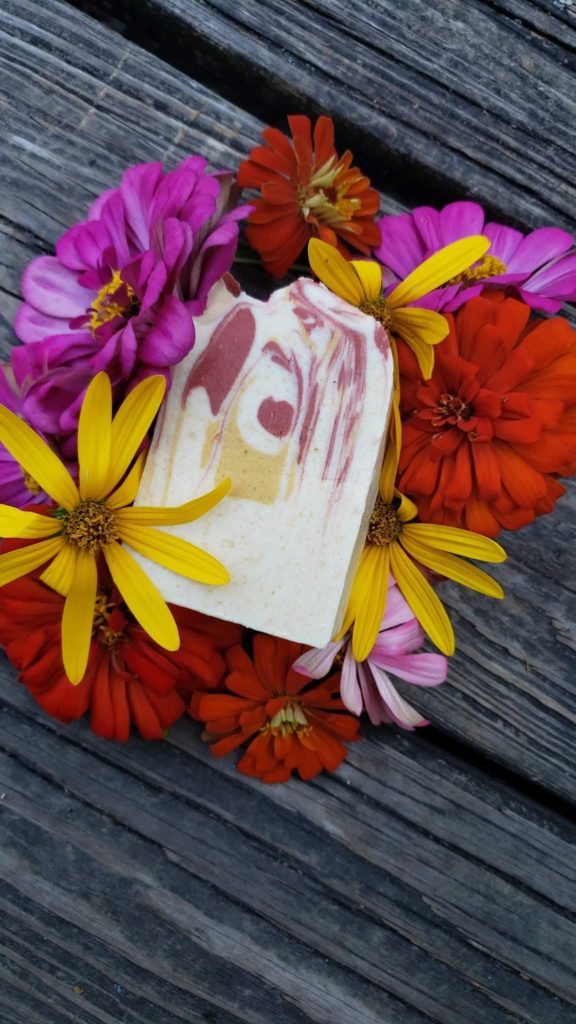guest post by Stephanie Shepler Harren
Different Kinds of Soaps
In general there are four different kinds of soaps that can be made. I am going to talk about three of these:
- melt and pour,
- hot process,
- cold process.
Cold process is what we use here on the farm.

Melt and Pour
This process is by far the simplest and it is where many people begin on their soap making journey to get familiar with soaps.
You would buy a pre-made base which gets melted into a liquid.
Colors and fragrances (essential oils or fragrance oils) are added and then poured into the mold or your desire. It hardens as it cools and can be used right away.
Easy, Peasy!

Cold process
Cold process is what is considered a “more natural’ soap. It allows you to customize every single ingredient, even adding fresh ingredients like fruit and veggie purees. Really the possibilities are as big as your imagination.

This soap is made the old-fashion way with lye, just like our ancestors. Of course, these days you don’t need to make the lye from wood ash (unless you want to). Because of the use of lye, it goes through a chemical process called soaponification.
Saponification is the grouping of a base and an acid to form a salt. In other words, you mix Sodium Hydroxide, also known as lye (which is your base) with an oil or fat, (which is your acid) to form soap (which is your salt).

These bars require a cure time of 4-6 weeks during which the lye and the oils continue to saponify. Natural glycerin is made and the water is evaporated. This makes for a hard, long lasting bar that is mild.
Cold process requires a bit of patience.
Hot Process
Hot process is basically the same as cold, except heat is used to speed up the saponification process. Heat is applied at different stages using an oven, crock pot, or even a microwave, depending on your method.
The advantage of hot process is that the cure time is reduced.
Which way will you use?
There you have it. Three ways you can start on your soap making journey. Here at Chosen Weeds Farm, we use the cold process method. As such, that is what these tutorials will focus on.
This introduction in video form is the first in a series teaching how to make goat milk soap. Subscribe to the YouTube channel or sign up at the website (linked to above) to learn how to make your own goat milk soap!
The next tutorials will be on the equipment you will need.
If you have any questions or would like to schedule and individual lesson, please email me at thechosenweeds@gmail.com or call 409749-0184.

Leave a Reply